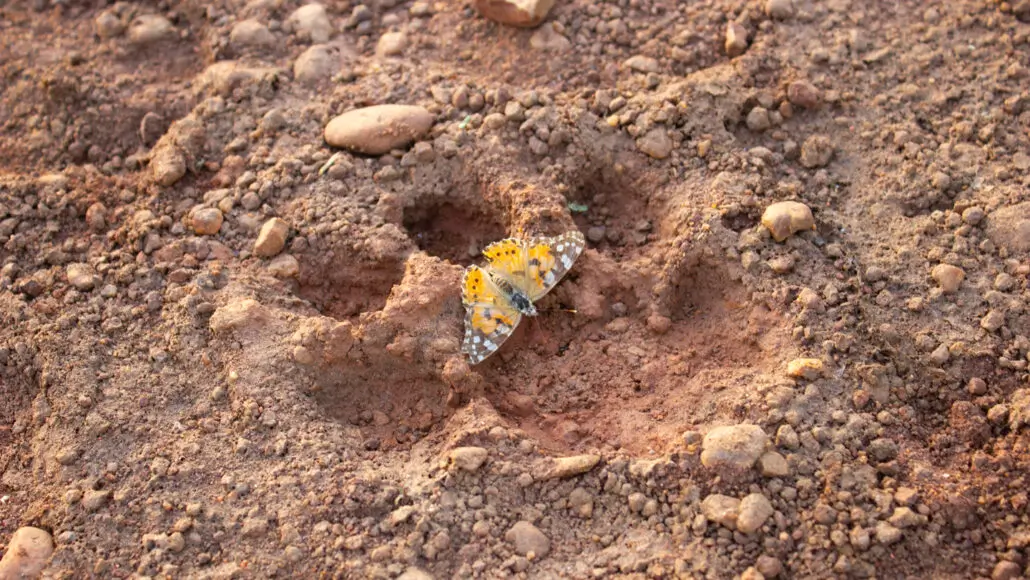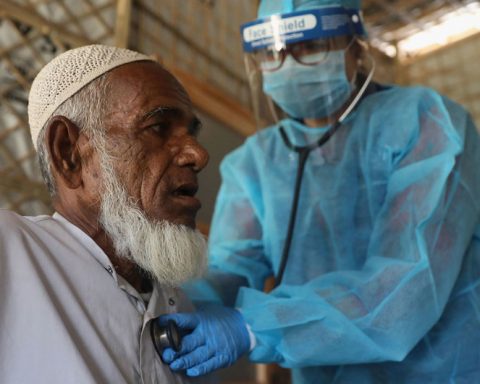Every year, painted lady butterflies born in Europe embark south on an epic journey to Africa. Now, researchers know exactly where on the continent these long-haul travelers spend their winter vacation.
From December through February, after flying across the Sahara in the fall, the orange-and-brown-winged insects set up camp and breed in savannas and highlands across central Africa, scientists report April 10 in the Proceedings of the National Academy of Sciences. As the rainy season brings greenery to the region, the butterflies and their caterpillar offspring feast on a variety of plants until their wintering spots dry up. Then the butterflies fly north to Europe.
Pinpointing exactly where painted lady butterflies (Vanessa cardui) overwinter and breed was the last unknown piece of their roughly 15,000-kilometer migration, says Gerard Talavera, an entomologist and evolutionary biologist at the Botanical Institute of Barcelona. The species — one of the most common butterflies in the world — boasts the longest round-trip journey of any butterfly (SN: 6/20/18).
Painted ladies aren’t the only insects to make such long migratory trips, says Constantí Stefanescu, a butterfly ecologist at Museu de Ciències Naturals de Granollers in Spain who was not involved in the study. Understanding how these butterflies do it provides a framework to explore how other migratory insects, including destructive pests, make such treks (SN: 4/8/18).
Scientists knew that the painted ladies went to Africa, but where on the continent they waited out European winters from December to February was a mystery (SN: 10/12/16). The butterflies cross the Sahara and arrive in countries such as Chad in the fall. Around November the insects fly elsewhere, Talavera says, but it was unknown where they landed.
Before this study, Talavera and colleagues had predicted that subtropical regions close to the equator might provide suitable habitat. To know for sure, the researchers needed to find butterflies in the field.
From late 2017 through early 2020, Talavera and an international team of researchers conducted fieldwork at a wide variety of sites across sub-Saharan Africa during the months of December and January. Another 15 sites were monitored year-round for about two years. In total, the team looked for adults and their young in nine countries, including Benin, Cameroon, and Kenya.
It was a big bet that the team would even find the butterflies, Talavera says. Their preferred plants in Europe are well-known, making them relatively easy to find. But what plants the insects might settle on in Africa was a big open question. Aside from the previous analysis pointing toward the subtropics and knowing that the insects prefer open spaces over forests, the team was going in blind.
“My main worry was about that, not being able to actually find the species,” Talavera says.
That worry was unwarranted. The researchers found more than 2,700 caterpillars and nearly 2,000 adult butterflies, from as far west as Cote d’Ivoire and all the way east to Kenya and Ethiopia.
From September to November, the butterflies occupy semiarid savannas. As those areas dry up, the painted ladies shift south to savannas and highlands in slightly humid regions from December to February. Central Africa’s tropical rainforests stop the butterflies from going any farther south, Talavera says. “These butterflies don’t like wet areas.”
Field observations suggest that lots of breeding might happen in these slightly humid savannas and highlands. Warm weather across the region could help the butterflies reproduce more quickly than they do in some parts of Europe, Talavera says, meaning three to five generations might be born in sub-Saharan Africa before any surviving adults head north in February.
Knowing where painted lady butterflies breed could help researchers understand why there are occasional population booms with 100 times as many butterflies in some years as others, Stefanescu says. In 2021, he and colleagues linked the phenomenon to rains in sub-Saharan Africa — perhaps giving butterflies more plants to stop and lay eggs on. But the part of West Africa identified in that study is different than where the newly identified breeding grounds are, Stefanescu says. Now, scientists can verify the link by looking at rainfall and other conditions where baby butterflies are found growing up.
But the next mystery Talavera’s group hopes to solve is why painted lady butterflies make such a long journey at all.




